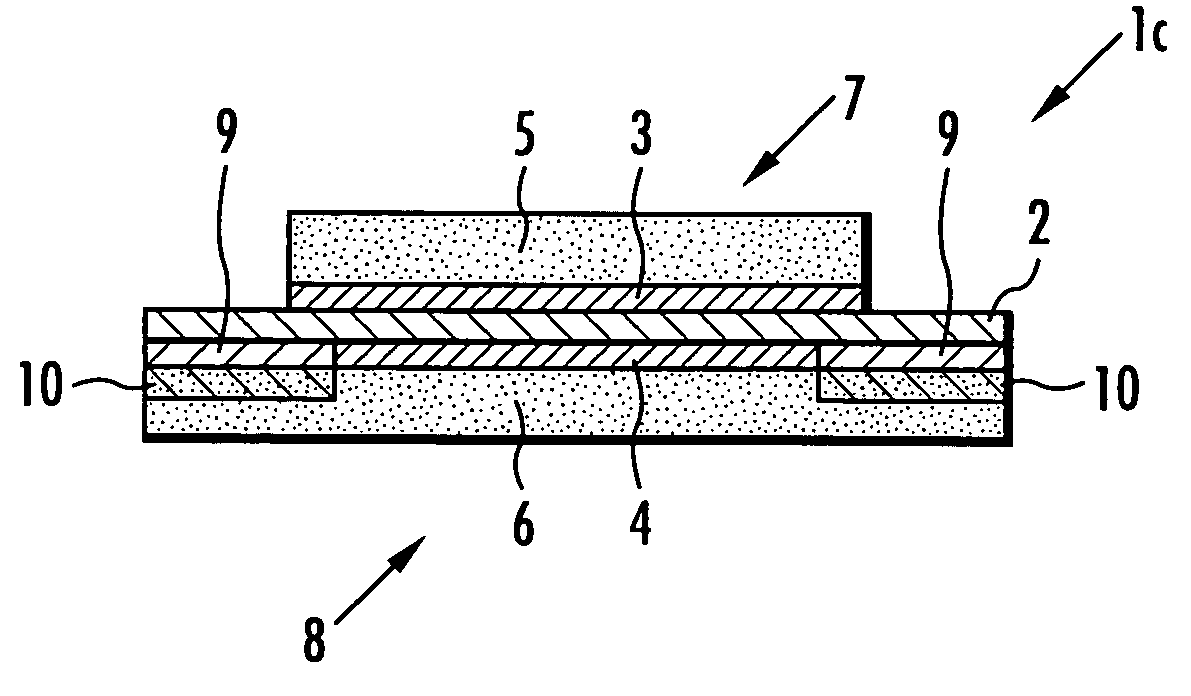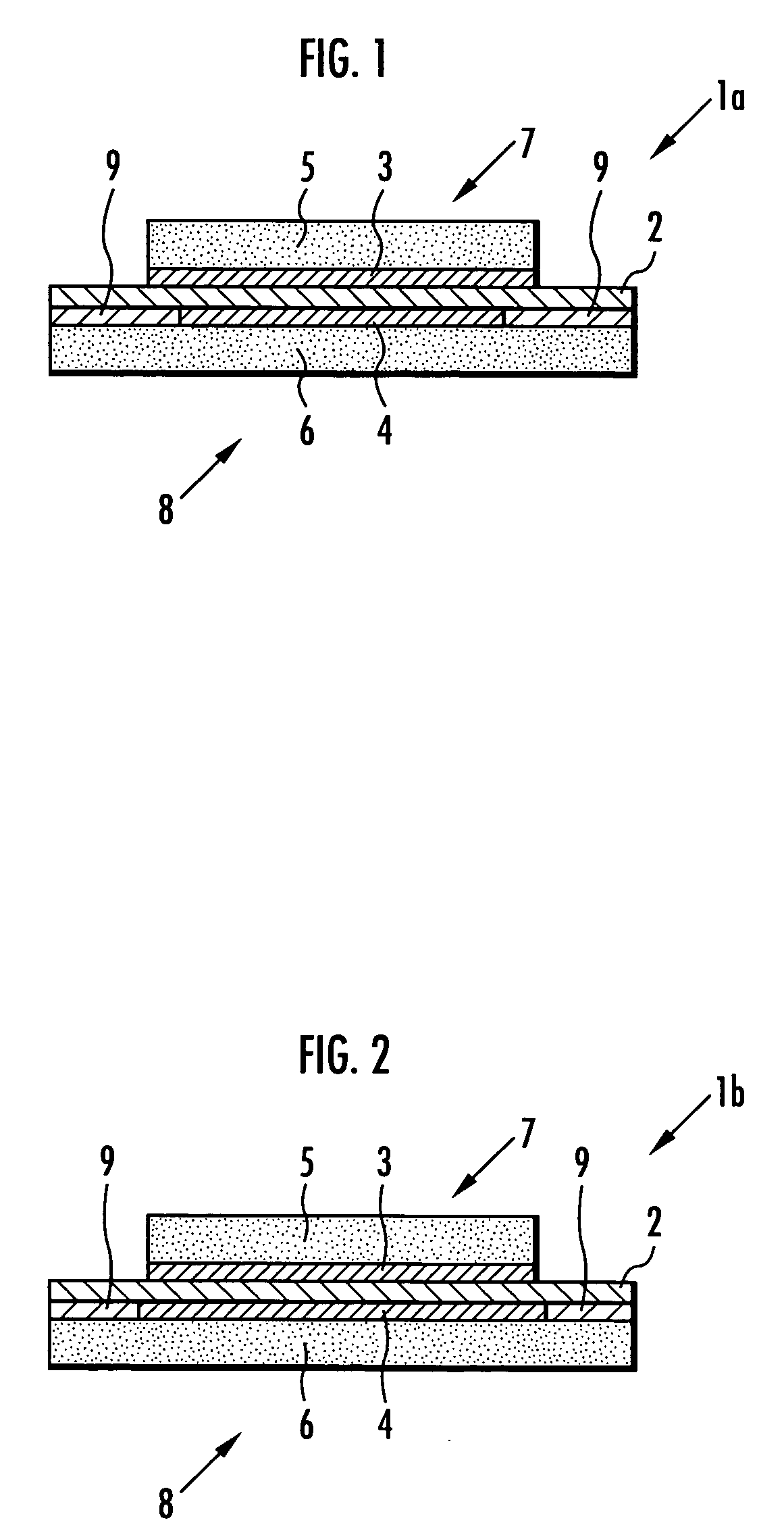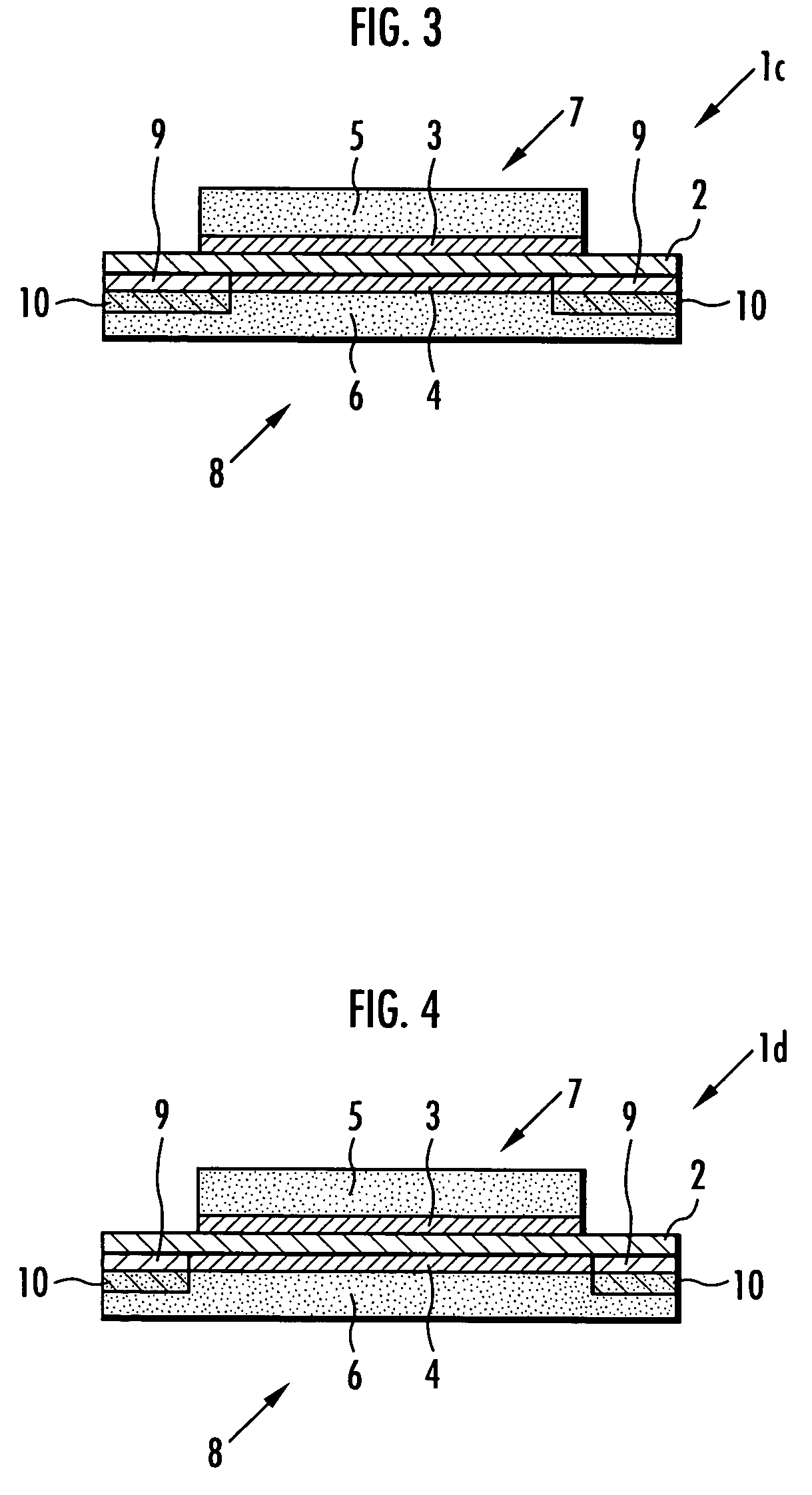Membrane-electrode structure and method for producing the same
a technology of membrane electrolectrodes and electrodes, which is applied in the direction of cell components, cell component details, electrochemical generators, etc., can solve the problems of electrical short circuit between the catalyst layers b>3/b> and b>4/b>, and the exhaustion of the petroleum source, so as to reduce the adhesive force, prevent the damage of the catalyst, and ensure the effect of a sufficient adhesiveness
- Summary
- Abstract
- Description
- Claims
- Application Information
AI Technical Summary
Benefits of technology
Problems solved by technology
Method used
Image
Examples
example 1
[0071] In this example, an adhesive was first prepared by mixing and agitating 100 parts by weight of the polymer represented by the following formula (1) (viscosity: 4.4 Pas; average molecular weight: 16,500; quantity of vinyl groups: 0.012 mol / 100 g); 4 parts by weight of organo-hydrogen polysiloxane (CR-100 (trade name) manufactured by Kaneka Corporation); 8 parts by weight of a plasticizer (PAO-5010 (trade name) manufactured by Idemitsu Petrochemical Co., Ltd.); 12 parts by weight of fumed silica (manufactured by Tosoh Silica Corporation); and 3 parts by weight of organo-silane (KBM-303 (trade name) manufactured by Shin-Etsu Chemical Co., Ltd.); defoaming; and adding a xylene solution (8.3×10−5 mol / μl) of bis(1,3-divinyl-1,1,3,3-tetramethyl disiloxane)-platinum catalyst as a reaction catalyst so that the content of platinum is 5×10−4 equivalent weights to the number of moles of the vinyl groups in the polymer represented by the following formula (1).
[0072] The tensile elongati...
example 2
[0099] In this example, an adhesive was prepared in the same manner as in Example 1 except that the quantity of compounded fumed silica was 20 parts by weight. The tensile elongation at break after curing of the above adhesive measured in the same manner as in Example 1 was 150%.
[0100] Next, a membrane-electrode structure 1a shown in FIG. 1 and a membrane-electrode structure 11a shown in FIG. 5 were produced in the same manner as in Example 1 except that the adhesive prepared in this example was used in place of the adhesive used in Example 1, and the stress concentration of the solid polymer electrolyte membrane 2 was examined in the same manner as in Example 1. The results are shown in Table 2.
example 3
[0101] In this example, an adhesive was produced by mixing and agitating 100 parts by weight of methyl (3,3,3-trifluoropropyl) polysiloxane of which both ends of the molecular chain are blocked by dimethylvinylsiloxy groups (viscosity: 1.0 Pa·s; content of vinyl groups bonded to silicon atoms: 1.0% by weight); 3.5 parts by weight of dimethylhydrogensiloxy(3,3,3-trifluoropropyl)polysiloxane of which both ends of the molecular chain are blocked by dimethylhydrogensiloxy groups (viscosity: 0.01 Pa-s; content of vinyl groups bonded to silicon atoms: 0.5% by weight); and 0.01 parts by weight of ferrocene; and defoaming; to which a xylene solution (8.3×10−5 mol / μl) of bis(1,3-divinyl-1,1,3,3-tetramethyl disiloxane)-platinum catalyst was added as a reaction catalyst so that the ratio by weight of platinum to methyl(3,3,3-trifluoropropyl)polysiloxane of which both ends of the molecular chain are blocked by dimethylvinylsiloxy groups was 5 ppm. The tensile elongation at break after curing of...
PUM
| Property | Measurement | Unit |
|---|---|---|
| tensile elongation at break | aaaaa | aaaaa |
| surface roughness | aaaaa | aaaaa |
| surface roughness | aaaaa | aaaaa |
Abstract
Description
Claims
Application Information
 Login to View More
Login to View More - R&D
- Intellectual Property
- Life Sciences
- Materials
- Tech Scout
- Unparalleled Data Quality
- Higher Quality Content
- 60% Fewer Hallucinations
Browse by: Latest US Patents, China's latest patents, Technical Efficacy Thesaurus, Application Domain, Technology Topic, Popular Technical Reports.
© 2025 PatSnap. All rights reserved.Legal|Privacy policy|Modern Slavery Act Transparency Statement|Sitemap|About US| Contact US: help@patsnap.com



